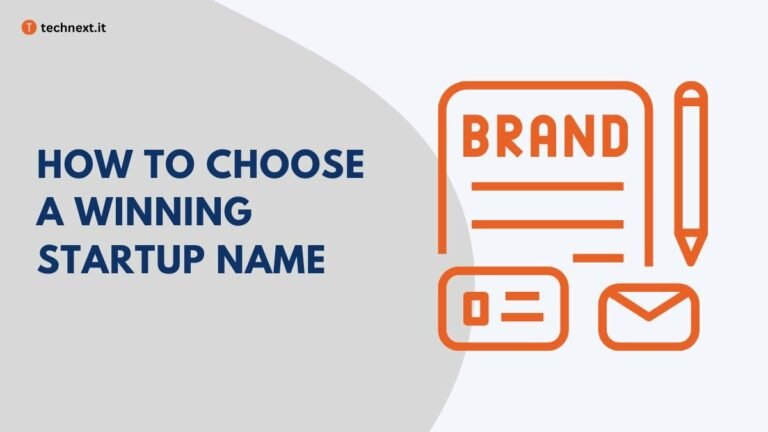Startup Branding in 2023: How to Establish Your Identity
Explore the ins and outs of startup branding and learn how to build a recognizable brand with this step-by-step guide.

Did you know that the Coca-Cola logo is recognized by a staggering 94% of the world’s population? That’s a staggering number of people familiar with Coca-Cola’s brand identity. So have you ever wondered how they managed to build such a powerful brand? And more importantly, can you create a brand identity for your startup?
Today we are going to explore the ins and outs of startup branding in 2023 that will help you create a brand identity for your startup. Let’s get started and find out how you can stand out from the crowd.
Understanding the Concept of Brand and Branding
Before we dive deeper into the startup branding guide, it’s essential to understand “what is brand” and “what is branding.” Let’s start by discussing the concept of the brand first.
A brand is a business and advertising term for recognizing your company, product, or individual, which also helps to shape your customer’s impression of the entity. It separates your product, service, or company from your competitors through tangible as well as intangible elements, like quality, dependability, reputation, and overall experience.
On the other hand, “Branding” refers to the method of establishing an outstanding reputation for your company in the minds of your customers. To put it simply, branding is the sum of your company’s logo, visual identity, goal statement, and voice.
Importance of Branding for Startup
As a founder, you need to know that your brand serves as the face of your company. It represents your values, mission, and unique selling points. Your potential customers are going to differentiate you from your competitors and remember your products by your brand.
Your branding efforts also can lead to long-term market positioning and attract new, repeat, and loyal customers. Additionally, your brand identity can help you price your product appropriately.
So you need to include your brand identity in every element of your startup from the very beginning to ensure a successful brand strategy.
Overview of the Key Components of a Strong Brand
You are now aware of the concept and importance of branding. You should also know that the success of branding depends on clarity and market relevancy. A tagline, logo, and business card can make you believe that your branding efforts are complete, but you are wrong.
To create a strong brand, your brand need to have some key components.
A unique and memorable brand name: You need a catchy and original brand name to make an impression on your consumers. Your customers will choose your product or service more often if your brand name is easy to remember and pronounce. It also helps your customers understand what sets your brand apart from the competition.
A clear and concise brand message: Communicating your business’s values, objectives, and USP to your target audience requires a clear and simple brand statement. Simple, easy-to-understand, and customer-resonant brand messaging is key. You can boost brand awareness and position your firm for long-term success by establishing a message that resonates with your target audience.
A visually appealing brand identity: A market-leading brand needs a visually appealing brand identity. The brand identity encompasses your logo, color palette, typography, and other design elements. You can connect with your audience emotionally with high-quality artwork that captures your brand’s soul and matches your brand’s personality.
Consistent branding across all touchpoints: Strong brand identities require consistent branding across all touchpoints. Your website, social media, packages, and customer service are all places where your customers can interact with you. Branding that is consistent across all touchpoints helps your customers remember your company and builds their trust in it.
A differentiated brand positioning: Brand identification and differentiation in a crowded market depend on brand positioning. A differentiated brand positioning is how your targeted buyers view your brand relative to your competitors. To define your brand positioning, identify your product’s distinctive features and benefits. You can also attract clients who respect your unique selling proposition.
A strong brand reputation: Giving your customers great services and products that satisfy or exceed their needs helps your target audience to trust and believe in your brand. Trustworthiness and good perception among your target audience build a solid brand reputation. In this digital age, you also need to monitor your online reputation to have a strong brand reputation.
Step By Step Guide to Startup Branding
Now that you are aware of the fundamentals like importance and key components let’s start step by step guide to your startup branding.
Define Your Brand Identity
Branding begins with brand identity. A brand identity includes company principles and how the brand conveys them through products and services. To define your brand identity, you need to go through the following four steps.
Determine your target audience
Branding starts with people, you need to find out your target audience. It will help you to easily plan and execute successful marketing projects. You can start by dividing your audience into groups. Then perform market research. You can also conduct competitor analysis. Talking to your audience will help. Don’t forget to look at the industry trends. Finally, analyze all the data and find your target audience.
Decide your brand positioning
Brand positioning is another important step. With a better brand positioning, your customers can differentiate your brand from your competitors. Brand positioning is not something that can be applied universally. You can focus on aspects like – problem and solution, quality of service, Price, etc. You can follow these steps to decide your brand positioning.
- Analyze your current brand positioning.
- Compare your positioning to that of your competitors.
- Determine what identifies your brand.
- Make a statement about your brand’s positioning.
- Put your new brand positioning into action.
Develop a brand personality and values
The next step is to develop your brand personality and values. Effective brand personality can attract people to your brand and turn them into loyal customers, which increases the value of your brand. In four steps, you can create a personality that makes your target audience feel connected to your business.
You need to learn about your intended audience. The next step is to reduce your brand’s personality dimensions like- ruggedness, sincerity, excitement, competence, and sophistication. Then choose the most descriptive adjectives for your brand. And last but not least, integrate your character into your brand strategy. Now you have your brand personality and value.
Create a unique and memorable brand name
As I mentioned before, a memorable brand name is more than just a catchy moniker for your company; it’s the way a that the customers remember your brand. Start by researching your target audience. Then pick your brand’s tone that reflects your brand’s heart. Shortlist and choose your brand name that is future-proof.
Choosing a unique and memorable brand name is an elaborate process. You can find a detailed article on “how to name your startup”.
Establish A Visual Brand Identity
A logo is more than a fancy product icon for your brand. It expresses your brand’s promise. Your customers must recognize your logo. So you have to pay extra attention to visual branding. Here is step-by-step how to do so –
Design a logo that reflects your brand personality and values:
The logo is the foremost thing new and potential customers will notice about your brand and business. It’s essential that your logo reflects your brand personality. And also, it needs to be simple, classic, and timeless.
Take Nike for example, most designers would not choose this logo for a shoe company, but it has become one of the most recognizable logos in the world.

However, don’t confuse simple with easy, designing a simple yet powerful logo is one of the hardest jobs. So if you need professional assistance in designing your logo, go for it.
It’s always best to assign someone you know personally to do such tasks, in case you don’t know anyone, designrush.com has put together a list of top startup branding agencies. You may check it out.
Choose colors and fonts that support your brand image:
You shouldn’t ignore color and fonts as a brand element. Choosing the wrong colors or fonts might confuse your customers. You have to ensure that the colors and fonts you choose complement the nature of your startup.
Create a consistent feel and look for your brand across all marketing materials:
Once you have a logo, you may use it for all marketing materials like business cards, symbols, taglines, packaging, site design, etc. Your logo sets the tone for your style, color palette, typeface, and general look and feel, so your designer can create a seamless new look.
Build A Brand Narrative
Emotional appeals are the most genuine way to connect with your clients, and stories are the most effective way to accomplish this. Develop a simple and genuine brand story that resonates with your target audience. Try to keep the element of surprise intact because customers are always looking for something exciting and new in stories. And don’t forget to use storytelling techniques to communicate your brand’s message and value proposition.
Communicate Your Brand Consistently
Brand consistency creates trust and awareness of your brand. It also contributes to brand recognition which helps in increasing revenue. Here is how you can do it –
Create a style guide that outlines your brand guidelines
A style guide is your ‘how-to’ on everything linked to your brand, from your logo and how to use it to what font or color to use when and with what to your image style and supporting brand assets.
Use the same tone and messaging across all marketing channels:
In this digital age, you will use many marketing channels, including online and offline, from brochures and TV commercials to social media and websites. Inconsistency in different channels can confuse your customer. Make sure you use the same tone and messaging across all marketing channels.
Ensure that all team members are aligned with the brand and its messaging
Before worrying about being consistent with customers, ensure your company’s departments – marketing, sales, support, IT, etc. and all team members are consistent and aligned with each other and the brand.
Conclusion
To stand out from all the companies offering similar services, you need a strong and well-defined brand. Your brand is a reflection of your values and a tool for establishing thought leadership in your field. To create credibility and a reputation as an industry leader, even startups with limited resources should invest in branding.
I hope you found our article helpful in providing ideas on how to establish a strong brand identity for your startup. It’s important to note that a solid product is always the foundation of a strong brand identity.
If you’re building a tech-based startup brand, it’s essential to provide great user experience, top-notch security, and superior functionality and usability compared to competitors, which is not easy for an early-stage startup.
At Technext, our goal is to help founders build a brand and not just a tech product. Over the last 10 years, we have successfully created global brands such as Gradnet, Themewagon, and Mailbluster. We are committed to continuing to assist founders in building their dream brands with our simple staff augmentation and startup services.
If you need help, we’d be happy to schedule a free consultation with Reza, who has played a crucial role in the development of hundreds of software products.






